Bishop, a rambunctious Pitbull with a heart of gold, found his forever home with a loving couple in Thane, India. Since they didn’t have any grandchildren, Bishop quickly became their “granddog,” showered with affection and treats. Bishop thrived on this attention, blossoming into a well-behaved companion.

Around his grandma, especially, Bishop transformed into a model canine citizen. He’d sit patiently at her feet, listening attentively to her stories and responding with gentle nudges for belly rubs. His soulful brown eyes seemed to hold a special twinkle when she was around.
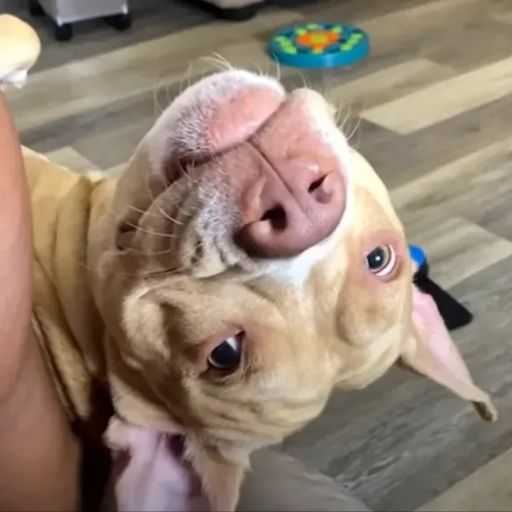
However, Bishop possessed a hidden side, a secret only revealed in his grandma’s absence. The moment she stepped out the door, a mischievous glint would spark in his eyes. The house, once a haven of tranquillity, would erupt in a whirlwind of playful chaos. Bishop would transform into a furry tornado, weaving through the furniture with the grace of a bull in a china shop. Couches became his trampolines, cushions his chew toys, and unsuspecting socks his prized possessions.
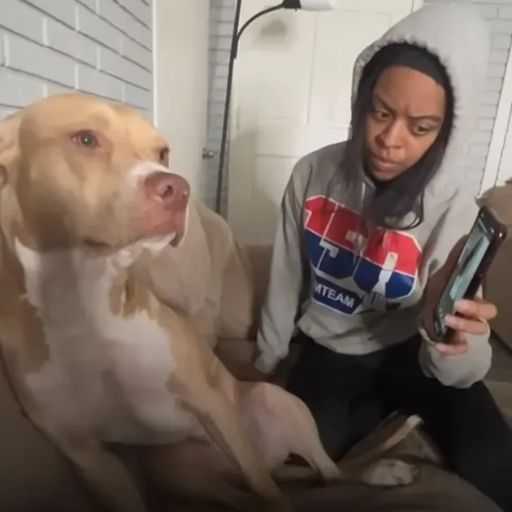
One day, while his grandma was away visiting relatives, Bishop decided to embark on a particularly daring escapade. He fixated on his owner’s prized wig, a voluminous auburn creation that sat perched on a mannequin head. With a calculated leap, Bishop snatched the wig in his mouth and proudly paraded around the house, the wig bouncing comically as he trotted.

The sight would have been comical if it weren’t so frustrating. When his owner returned home to the scene of the crime, they were greeted by a trail of auburn hair and a sheepish-looking Bishop with the wig abandoned mid-romp.
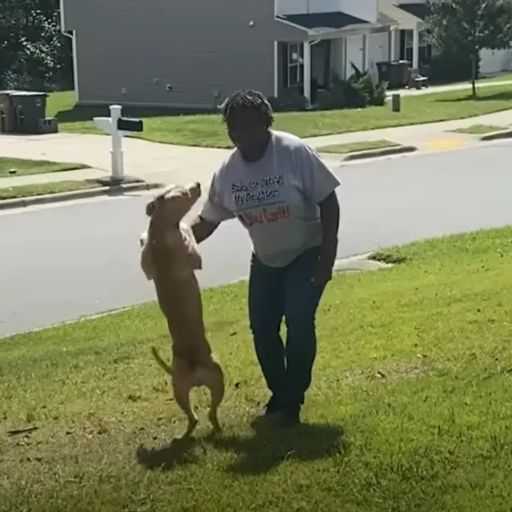
These solo adventures became a regular occurrence. Bishop, it seemed, thrived on pushing boundaries when his grandma wasn’t around. He’d snatch remote controls, leaving his owners scrambling to change channels. He’d develop a fascination with the owner’s appointment book, gleefully sprinting around the house with it clamped firmly in his jaws. The playful defiance in his eyes was undeniable.

The owner, at their wit’s end, tried everything to curb Bishop’s mischievous streak. They attempted to tire him out with long walks and engaging playtime, but Bishop’s energy seemed boundless. They implemented stricter training routines, hoping to instil better discipline, but Bishop, while charmingly obedient around his grandma, seemed to possess a selective memory when it came to following commands in her absence.

Despite the chaos, the owner couldn’t help but adore Bishop. His antics, while frustrating, were undeniably entertaining. They’d often find themselves laughing at his latest escapade, shaking their heads in disbelief at his audacity. One day, the owner decided to document Bishop’s solo shenanigans. They secretly filmed him mid-rampage, the video capturing Bishop gleefully sprinting around the house with a roll of toilet paper trailing behind him.
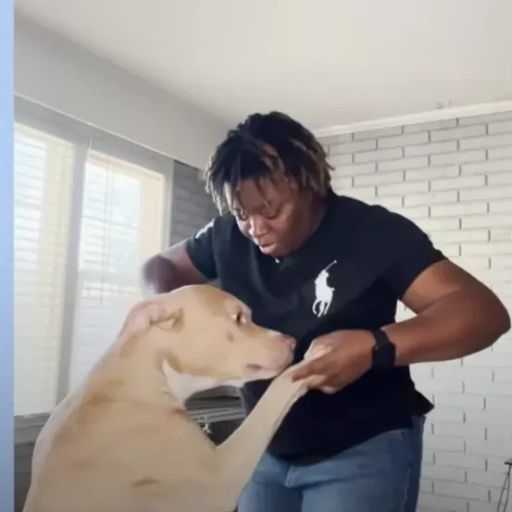
When Bishop’s grandma returned, the owner presented her with the evidence. She watched the video in disbelief, a mixture of amusement and exhaustion washing over her face. “Is that Bishop?” she’d ask, a hint of laughter in her voice. The owner simply nodded, relieved to finally have their stories validated.
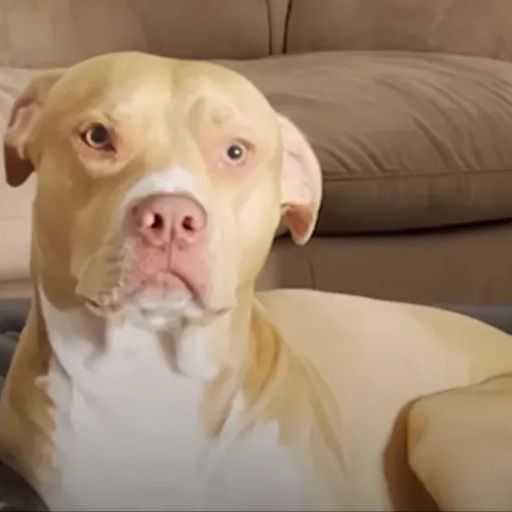
Bishop’s grandma, while playfully scolding him for his naughtiness, showered him with extra affection upon her return. She understood that Bishop’s behaviour stemmed not from malice, but from an overflowing well of love and energy that he couldn’t quite contain in her absence. Bishop, sensing her forgiveness, would snuggle into her lap, his playful demeanour replaced by blissful contentment.

Life with Bishop continued to be an amusing adventure. He remained the perfect gentleman around his grandma, and his solo exploits became a source of laughter and entertainment for the whole family. Bishop, the Pitbull with two distinct personalities, brought a unique kind of joy to their home, reminding them that even the most well-behaved companions can harbour a surprising wild streak.

Watch The Full Video Here:
Ever noticed your furry friend’s face light up when you come home? Dogs have a unique way of expressing joy that can melt your heart. Their wagging tails and bright eyes seem to convey happiness beyond words. But have you ever wondered if dogs can actually smile? It’s a question that tickles the curiosity of every dog lover. Understanding how dogs communicate through body language can give you fascinating insights into their emotions. So, let’s take a closer look at the subtle cues that our canine companions use to express their feelings.
Exploring the Behavior of Dogs
Understanding canine behavior is key to interpreting their emotions accurately. Dogs use various methods to communicate their feelings, making it essential to pay attention to their body language and vocalizations.
- Body Language: Dogs express happiness through body movements such as wagging their tail, relaxed body posture, and a relaxed face. These signals indicate contentment and joy in your furry friend.
- Facial Expressions: While dogs don’t smile like humans, they have specific facial expressions that reveal their emotions. A soft, open mouth, relaxed eyes, and a slightly raised lip could indicate a happy pup.
- Vocalizations: Along with body language, dogs use sounds to convey their emotions. A joyful bark or playful growl can signify happiness and excitement.
- Play Behavior: Playfulness is a clear indicator of a dog’s happiness. Engaging in play, such as running around, chasing toys, or play-bowing, shows that your dog is enjoying the moment.
- Social Interactions: Dogs are social animals and seek companionship. If your dog seeks physical contact, follows you around, or wags its tail when seeing you, it’s a sign of happiness and affection.
Understanding these behavioral cues can help you build a stronger bond with your canine companion and ensure their well-being and happiness. Paying attention to how they communicate will deepen your connection and enhance your relationship with your beloved pet.
Scientific Perspective on Dog Smiles
Understanding Dog Facial Expressions:
Dogs don’t smile in the same way humans do, but they exhibit certain facial expressions that convey happiness. A relaxed mouth, soft eyes, and a slightly lifted lip are signs that your dog is feeling content and joyful.
Research on Canine Communication:
Scientists suggest that dog facial expressions may not always reflect their emotions accurately. While certain expressions indicate happiness, interpreting a dog’s feelings solely based on its face can be misleading. It’s important to consider other body language cues as well.
Body Language and Emotions:
A dog’s body language, such as a wagging tail, relaxed posture, and playfulness, are more reliable indicators of their mood than facial expressions alone. These behaviors, along with vocalizations like barks and growls, provide a more comprehensive understanding of a dog’s emotional state.
The Bond Between You and Your Dog:
By observing and interpreting your dog’s body language and vocal cues, you can strengthen your bond and ensure their well-being. Engaging in play, social interactions, and offering physical affection are key ways to keep your furry friend happy and content. Understanding and responding to your dog’s needs fosters a deeper connection between you and your canine companion.
Factors Influencing Dog Smiles
Social Environment
- Other Dogs: Dogs might mirror the behavior of other dogs they interact with, leading to reciprocal expressions of joy, including what seems like a smile.
- Humans: Dogs are highly empathetic and can smile in response to human smiles as a form of social bonding.
Emotional State
- Happiness: When happy, dogs can display relaxed facial muscles that may resemble a smile, indicating contentment and joy.
- Playfulness: Playful behavior often elicits what appears to be a smile in dogs, showing their enjoyment and engagement.
Health and Well-Being
- Physical Comfort: A dog in a comfortable physical state and good health is more likely to exhibit behaviors that resemble smiling.
- Mental Health: Mental well-being and a positive emotional state can result in more frequent instances of “smiling” in dogs.
Training and Positive Reinforcement
- Rewards: Dogs trained using positive reinforcement techniques tend to exhibit happier behaviors, including what humans interpret as smiling.
- Bonding: Strengthening the bond through training and positive interactions can lead to increased instances of perceived smiling behavior in dogs.
Genetic Factors
- Breeds: Some dog breeds naturally have facial features that make them look like they are smiling, even though it may not always reflect their emotional state.
- Individual Differences: Each dog is unique, and some may naturally exhibit expressions that resemble smiles more than others.
- Understanding Signals: Interpreting your dog’s body language holistically is key to understanding whether their facial expressions signify happiness or other emotions.
- Context: Consider the context in which a dog displays a “smile-like” expression to determine its true meaning and correlate it with other behavioral cues.
By considering these various factors, you can better understand the nuanced ways in which dogs communicate happiness and contentment without necessarily “smiling” in the way humans do.
Photography Guide: Capturing Dog Smiles
Set the Scene:
When capturing that perfect dog smile, pay attention to the environment. Choose a location where your furry friend feels comfortable and at ease. Natural light works best to showcase their expressions clearly.
Get on Their Level:
To capture authentic dog smiles, kneel or sit down to be at eye level with your pup. This perspective helps create a more intimate and engaging photo that truly captures their joy.
Use Treats and Toys:
Engage your dog with their favorite treats or toys to bring out natural smiles. Encouraging playfulness during the photo session can lead to genuine expressions of happiness.
Timing is Key:
Be patient and observant to seize the moment when your dog flashes a smile. Timing is crucial, so keep your camera ready and be prepared to click when they show their joyful expression.
Focus on the Eyes:
The eyes are the window to a dog’s emotions. Ensure that the eyes are in focus when capturing their smile. Sharp, clear eyes can convey happiness and connection in the photograph.
Candid Shots:
Some of the best dog smiles are captured in candid moments. Let your dog be themselves, whether they are playing, running, or simply relaxing. Candid shots often reveal the true essence of your dog’s happiness.
Editing Carefully:
After the photoshoot, edit the pictures lightly to enhance colors and brightness subtly. Avoid heavy editing that alters the natural look of your dog’s smile. The goal is to maintain the authenticity of the moment captured.
Share the Joy:
Once you have the perfect shot of your dog’s smile, share it with fellow dog lovers. Spread the joy and positivity that your furry companion brings with their heartwarming smile.
Conclusion
Now that you’ve delved into the world of dog smiles, you understand the various ways our furry friends express joy and happiness. From body language to vocalizations, dogs have a unique way of communicating their emotions. Factors like social environment, health, and training play a role in their cheerful demeanor. With the tips on capturing authentic dog smiles in photography, you’re equipped to freeze those precious moments forever. Remember, getting on your dog’s level, using treats, and focusing on their eyes can help you snap the perfect shot. By sharing these moments with others, you spread the joy that dogs bring into our lives. Keep cherishing those genuine expressions of happiness from your loyal companions!
Frequently Asked Questions
How do dogs communicate joy and happiness?
Dogs communicate joy and happiness through body language, vocalizations, and facial expressions. They may wag their tail, have a relaxed body posture, play bow, or make happy vocal sounds.
What factors influence a dog’s “smile”?
Several factors influence a dog’s “smile,” including the social environment, emotional state, health, training, and genetics. Understanding these factors can help interpret a dog’s expressions accurately.
How can I capture authentic dog smiles in photography?
To capture authentic dog smiles in photography, set the scene, get on the dog’s level, use treats and toys, be patient for the right moment, focus on the eyes, capture candid shots, edit photos lightly, and share the joy with others.

Hey there, I’m Janet Brooks, a dog-loving student from California. I’m all about helping pups in need, especially those without homes. Me and my awesome friends work together to give shelter and love to stray dogs. Oh, and I also write blogs about dogs to share helpful info.